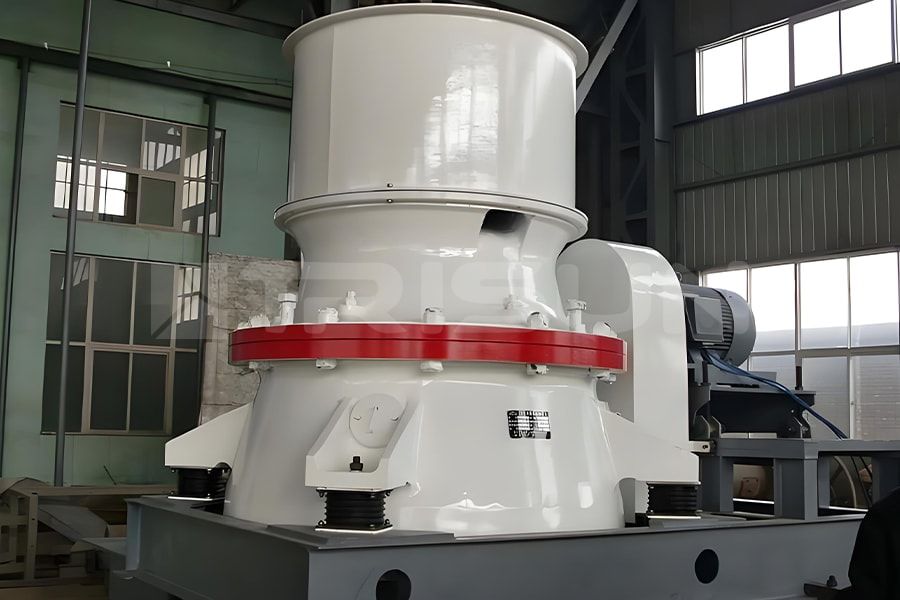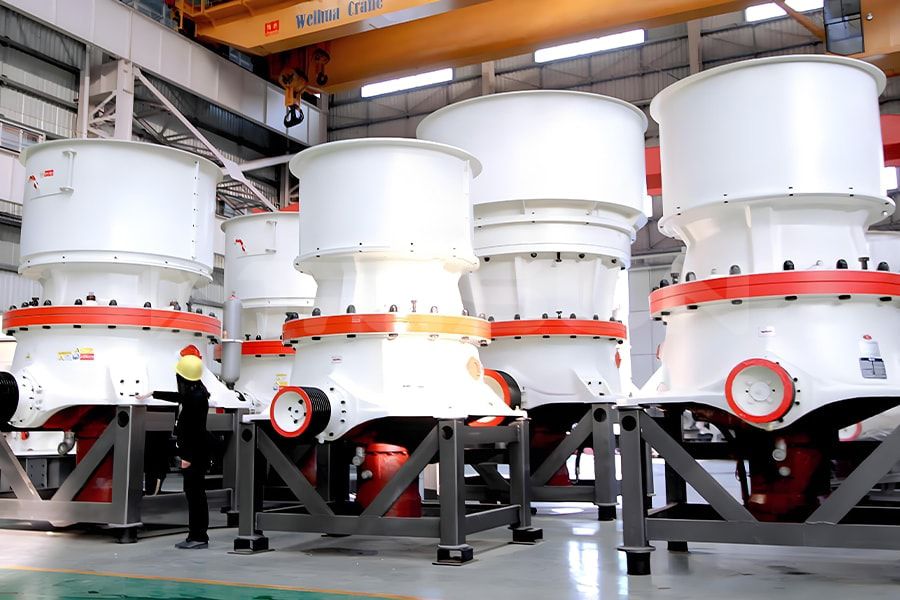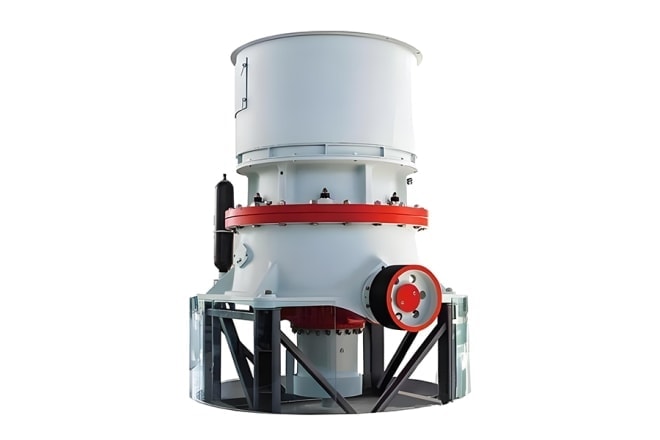
- Features & Properties
- Technical Specification
- Gallery
- Related Products
1. High efficiency: The main shaft of this hydraulic cone crusher is supported at both the upper and lower ends, which can withstand greater crushing force and larger stroke. In addition, the special crushing cavity adapted to the lamination principle makes the crusher have higher crushing efficiency.
2. Large capacity: This hydraulic cone crusher perfectly combines the crushing stroke, crushing speed and crushing cavity, so that the capacity of this machine is 35% to 60% higher than that of traditional spring cone crusher when the diameter of the large end of the moving cone is the same.
3. High quality aggregate: This hydraulic cone crusher adopts a unique crushing cavity and lamination crushing principle to produce a crushing effect between particles, thereby significantly increasing the proportion of cubes in the finished product, reducing needle-shaped materials, and making the discharge size more uniform.
4. Double insurance: The hydraulic and lubrication system controlled by double insurance ensures the crusher's overload protection and good bearing lubrication.
5. Easy Maintenance: The hydraulic cone crusher has a simple and compact structure, stable performance, is not prone to failure, and is easy and quick to maintain.
| Model | Cavity | Maximum feeding size (mm) | Minimum discharge opening (mm) | Capacity (t/h) | Power(kw) |
| HST100 | S1 | 240 | 22 | 85-170 | 90 |
| S2 | 200 | 19 | 70-130 | ||
| H1 | 135 | 10 | 45-130 | ||
| H2 | 65 | 8 | 35-80 | ||
| H3 | 38 | 4 | 27-60 | ||
| HST160 | S1 | 360 | 25 | 120-345 | 132 |
| S2 | 300 | 22 | 105-305 | ||
| H1 | 185 | 13 | 66-210 | ||
| H2 | 90 | 10 | 65-165 | ||
| H3 | 50 | 6 | 48-105 | ||
| HST250 | S1 | 450 | 35 | 255-605 | 220 |
| S2 | 400 | 29 | 215-515 | ||
| H1 | 215 | 16 | 110-395 | ||
| H2 | 110 | 13 | 115-340 | ||
| H3 | 70 | 8 | 90-255 | ||
| HST315 | S1 | 560 | 41 | 335-1050 | 315 |
| S2 | 500 | 38 | 305-895 | ||
| H1 | 275 | 16 | 170-665 | ||
| H2 | 135 | 16 | 190-505 | ||
| H3 | 65 | 13 | 205-320 | ||
| HST450 | S1 | 560 | 56 | 300-1300 | 450 |
| S2 | 465 | 56 | 400-1200 | ||
|
HST560 |
H1 | 300 | 22 | 448-1512 | 560 |
| H2 | 155 | 19 | 400-1372 | ||
| H3 | 80 | 10 | 280-775 | ||
| HST750 | H1 | 370 | 25 | 480-2500 | 750 |
| H2 | 195 | 22 | 552-1604 | ||
| H3 | 85 | 10 | 364-883 |
Note: All features, functionality and other product specifications are subject to change without notice or obligation.








FAQ
Q: What are the technical advantages of single-cylinder hydraulic cone crusher?
A: 1) The single-cylinder hydraulic cone crusher can be insufficiently fed, but full feeding is more beneficial to production capacity, product fineness, and even wear of the liner.
2) The single-cylinder hydraulic cone crusher realizes the lifting and lowering of the movable cone through a single hydraulic cylinder. It can easily realize automatic adjustment of the discharge opening during the production process.
3) The horizontal force of the single-cylinder hydraulic cone crusher is supported by the upper and lower ends of the main shaft, and the longitudinal force is supported by the floating hydraulic cylinder. The main shaft structure has good stress conditions, is stable and reliable, and is not prone to undesirable phenomena such as shaft bending and shaft breakage. The moving cone tip angle of the single-cylinder hydraulic cone crusher is 70 degrees, which is beneficial to processing water- and mud-containing materials.
4) Only a few bolts are needed to loosen the fixed cone liner of the single-cylinder hydraulic cone crusher, saving time and effort.
5) The single-cylinder hydraulic cone crusher has 4 types of eccentricity in the same crusher. As the properties of the ore change, the processing capacity also changes, so it has certain flexibility.
6) The single-cylinder hydraulic cone crusher has spiral helical gear surface contact, which has high transmission efficiency, even wear and long service life. The tooth gap can be adjusted by just loosening a few bolts.
7) The single-cylinder hydraulic cone crusher can sensitively provide overload protection by setting the pressure of a single accumulator.
8) Under normal circumstances, the single-cylinder hydraulic cone crusher can be started with load or run without load, which is simple and effective.
9) The single-cylinder hydraulic cone crusher only needs to remove a few bolts to lift the upper frame. It has few maintenance parts and can be maintained from the upper part of the frame, so the maintenance cost is low.
10) Each single-cylinder hydraulic cone crusher can be equipped with an automatic adjustment system for the discharge opening, and multiple crushers can be centrally controlled through the central control room to control the discharge opening of each crusher, and the mechanical and electrical power and crusher pressure can be loaded. It is dynamically adjusted and can display various operating parameters including the instantaneous wear of the liner.
Q: What are the common problems, possible causes and solutions during the operation of single-cylinder hydraulic cone crusher?
A: 1) Common problems and possible causes
1-1. Main shaft breakage: caused by the presence of unbreakable materials or the material at the feed opening being too large.
1-2. The crusher vibrates violently and the moving cone rotates too fast: the main shaft is stuck in the cone bushing; there is lack of oil or the oil is not clean; the spherical bearing is worn, or other reasons cause the moving cone to sink, and the gap between the main shaft and the cone bushing is too small.
1-3. Excessive vibration during operation: insufficient spring pressure, too much muddy water in the ore or too fine materials, uneven feeding.
1-4. The drive shaft rotates unevenly, the sound is abnormal, the pulley rotates but the moving cone does not move: The teeth of the bevel gear are installed incorrectly, the axial clearance of the transmission shaft is too large during operation and is worn or damaged, the pulley or gear key is worn or unbreakable objects cause the shaft to break.
1-5. Current is too high: Excessive feeding, poor lubrication, damaged bearings or spherical bearings, insufficient bearing contact surface, friction between the large bevel gear and the lower part of the spherical bearing seat.
2) Solutions.
2-1. Stop the machine for inspection, find out the damaged parts, and replace them.
2-2. Stop the machine for inspection, find out the cause, clean, lubricate, repair or replace or adjust the gap.
2-3. Tighten or replace the spring and adjust the feed.
2-4. Adjust the feed, strengthen lubrication, replace the bearing, or add padding to the lower part of the spherical bearing seat.
2-5. Stop the machine to change the gear, correct the meshing clearance or replace the main shaft, strengthen the iron removal system.






